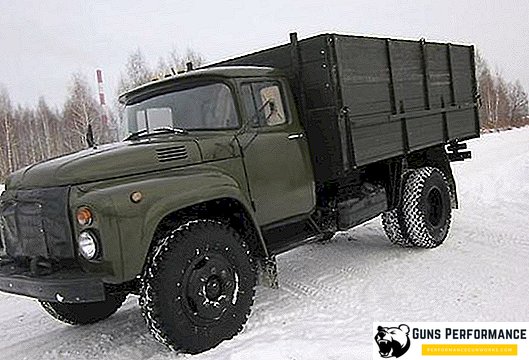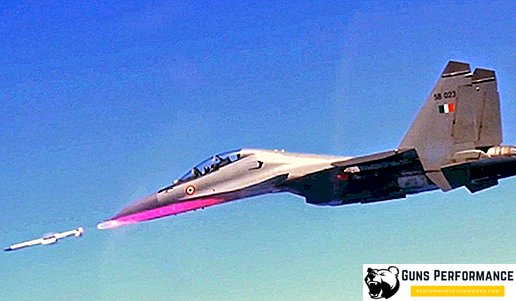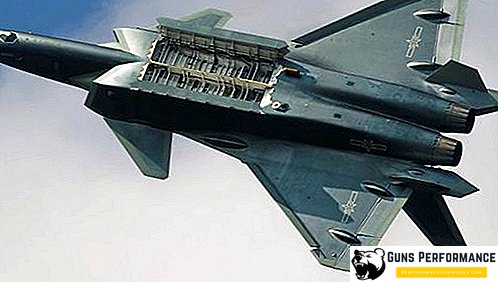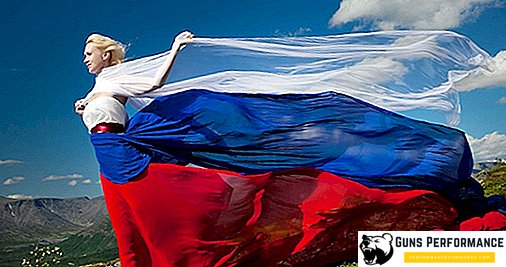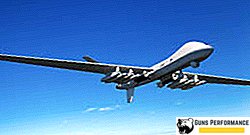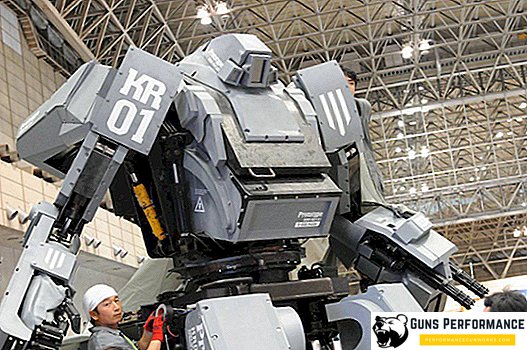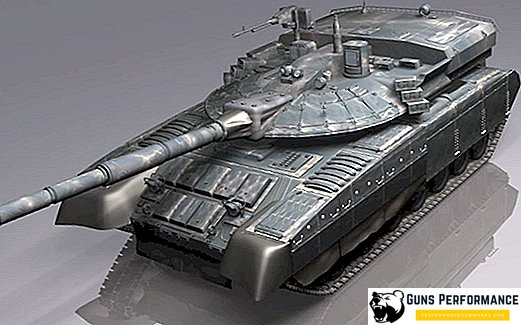
"Black Eagle" ("Object 640") is the name of the Russian promising main battle tank, developed by the Omsk transport engineering design bureau in the 1990s. This combat vehicle was never put into mass production, but the design developments obtained during its creation were later used during the work on the T-14 Armata.
In the design of the "Black Eagle" was used a large number of innovative technical solutions, and its layout has significant differences from the layout of both domestic and foreign combat vehicles.
History of creation
Information about how to develop a project to create a tank "Black Eagle" a bit. It is known that work on the tank, which later received the name "Object 640" began in the late 80s in the OKB LKZ, and after its closure were transferred to Omsk.
Omsk design bureau in the Soviet period was mainly engaged in the creation of engineering vehicles, as well as the modernization of the main battle tanks: T-55, T-64, T-80. In the 90s, a huge and modern plant was in distress due to constant underfunding.
The layout of the Black Eagle was first demonstrated to the general public in 1997. The car was a slightly modified chassis of the T-80U tank with a turret of a new design, which was the main "highlight" of the promising machine.

Works on the tank were carried out in an atmosphere of strict secrecy, even during the show, the tank tower was tightly closed by a camouflage net, the car was demonstrated at a distance of 150 meters and only under strictly defined angles. The tactical and technical characteristics of the new tank remained secret, but the developers claimed that it exceeded in its fighting qualities the newest western cars of the time.
The demonstration of the prototype tank was held in 1999, however, it was not accompanied by official statements about the characteristics of the new machine and the future perspective of the project. "Object 640" was one of the favorite topics for publications in the "yellow press", fantastic characteristics were attributed to the tank, publications about the imminent adoption of this vehicle were repeatedly published. "Object 640" was called the fourth tank, and sometimes even the fifth generation. However, there were very few official statements.
Soon the "Black Eagle" gradually began to forget. At the beginning of the 2000s, it was announced that a new main battle tank, the T-95, would be created in Russia. Around the same time, the Omsk plant, without receiving orders from the defense ministry, went bankrupt.
In 2009, the official statement of the Russian Ministry of Defense appeared. It was reported that a tank called “Black Eagle” or “Object 640” does not exist at all. In 2011, the deputy head of the Main Artillery Directorate of the Ministry of Defense of the Russian Federation noted that the achievements obtained during the creation of the Black Eagle would be used in Armat.

Description of construction
The Black Eagle was made on the basis of the undercarriage of the main Soviet T-80U tank, to which some changes were made. The tank hull was somewhat lengthened compared to the T-80U, but the main feature of the new machine was its tower of unusual shape.
The layout of the tank can be called a classic: the control compartment with the driver’s seat is in the front of the hull, the fighting compartment is in the middle of the vehicle, and the engine compartment is located in the stern of the tank. However, the layout of the "Black Eagle" has significant differences from most of the combat vehicles of domestic and foreign production. The bow of the tank is divided by longitudinal armored partitions into three isolated compartments. On average, there is a driver's seat, this compartment is reported to the fighting compartment. In the side compartments are fuel tanks.
Unlike other Soviet cars, the seat of the Black Eagle driver is not located under the hatch, but directly behind it. This solution has increased the reservation of the front of the case and get rid of the weakened zone.
The gunner’s and commander’s workplaces have two positions: hiking and fighting. In the latter position they are below the level of the tower. It should also be noted that the ammunition and fuel reserves are securely isolated from the tank crews. Powder gases, which are formed after a shot from a cannon, do not get into the fighting compartment, because the breech of the gun is also separated from the crew.

Automatic loading and ammunition handed down to the aft niche of the tower with expelling panels.
One of the main problems of Soviet (Russian and Ukrainian) tanks is the placement of ammunition and fuel inside the habitable part of the hull. The automatic loader, which was first installed on the Soviet OBT T-64, significantly increased the rate of firing of combat vehicles and allowed to abandon one of the crew members - the loader. However, the price of such a design decision was very high. When injected into the fighting compartment of a cumulative jet or a projectile, ammunition packed into the automatic loader, with a high probability of exploding, which leads to the death of the crew and the loss of the combat vehicle.
On most modern Western tanks (Leopard 2, Abrams) for this reason they decided to abandon the automatic loader. The shells are in an isolated niche; the fourth member of the crew, the loader, delivers them to the gun.
The experience of using tanks in the first Chechen campaign clearly showed all the flaws of such a layout. Omsk tank builders proposed to solve this problem radically: on the Black Eagle, the automatic loading and ammunition unit is located in the aft niche, which significantly increases the crew’s chances of survival even if the shell hits the tank and the ammunition explodes. In addition, the horizontal location of the ammunition makes it possible to use longer sub-caliber projectiles with greater power.

The turret of the tank is welded; it is made of two symmetrical armor compartments rigidly fixed on the base. It has the shape of a low flat dome (in the front), which passes into a rectangular contour bounded by the stern armor plate. Armor front of the tower has a significant slope, which allows you to more confidently confront sub-caliber ammunition.
The Black Eagle has three levels of protection. Its first frontier is a set of optoelectronic devices designed to detect and disable the means of defeating the enemy. Also, an active defense system was installed on the machine, capable of destroying the enemy’s missiles and anti-tank projectiles from a distance, and dynamic protection and multi-layered armor reduce the likelihood of the tank being destroyed if it is hit by a missile or missile.
The designers did not forget about protecting the roof of the tank turret, it has multi-layered armor and reliably protects against the ammunition attacking the tank from above: BILL-2, Javelin, ammunition using a shock core.
The unusual shape of the tower makes the Black Eagle one of the lowest cars in its class. In addition, the designers paid attention to reducing the radar visibility of the tank.
The pre-production model, demonstrated to the public in 1999, was armed with a 125-mm smoothbore cannon, a 7.62-mm machine gun and a remote-controlled Kord anti-aircraft gun (12.7 mm). However, the plans were installation on the tank guns caliber 135, 140 and even 152 mm. When mounted on a tank, the 152-mm cannon machine was able to fire at a distance of ten kilometers and use anti-tank guided missiles for firing.
The tank was supposed to be equipped with a new gas turbine engine (GTE) with a capacity of at least 1500 liters. with. With a tank mass of 48 tons, this provided the car with a record power density of more than 30 liters. with. for one ton. And, as a result, excellent dynamic characteristics - most of the third generation of Western combat vehicles have a specific power of not more than 25 liters. s / ton Cruising the tank (with outboard tanks) was 1 thousand km.

The "Black Eagle" was equipped with special tracks, on which it was possible to install extenders on each side. Thus, the specific pressure of the machine on the ground decreased and its permeability increased. Without expanders, tank dimensions fully met railway standards. Tank suspension - independent torsion bar with hydraulic shock absorbers.
The jobs of the gunner and the commander of the machine were fully equivalent to the ability to control the fire. Each of them is equipped with a unified electronic module, the display of which displays information about the tactical situation, a map of the area, and information about the state of various combat vehicle systems. Information about the objectives and the overall situation is supplied to the electronic modules of the commander and the gunner via optical, infrared and thermal imaging channels.
The tank is equipped with a ballistic computer and a laser rangefinder. The ballistic computer automatically generates corrections for the speeds of the target and the machine, determines the distance to the target, takes into account side wind, bending and wear of the bore, roll of the axles of the implement and even air temperature and atmospheric pressure.

Specifications
Below are the performance characteristics of the Black Eagle tank:
- weight - 48 tons;
- crew - 3 people;
- length - 7970 mm;
- width - 3095 mm;
- height - 1793 mm;
- active protection system - Drozd-2;
- dynamic protection system - DZ "Kaktus";
- armament - a 125-mm cannon, a 7.62-mm PKT machine gun, a 12.7-mm Kord machine gun;
- engine type - GTE (1500 hp);
- Max. speed on the highway - 80 km / h;
- power reserve - 500 km (without additional tanks);
- power density - 31.25 l. s./t.




